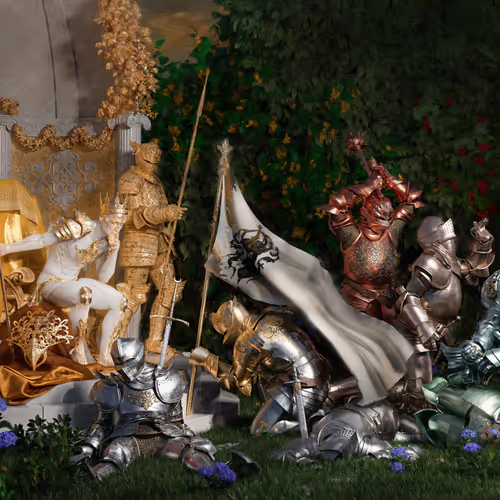In "Alea Iacta Est", Muhju presents a powerful interpretation of Julius Caesar’s fateful crossing of the Rubicon in 49 BCE—an irreversible act that marked the beginning of civil war and the fall of the Roman Republic. The title, meaning “The die is cast,” echoes the weight of Caesar’s decision and the point of no return.
Caesar is depicted mounted on horseback, clad in full battle armor, leading his legion across turbulent ground. His soldiers charge forward with unwavering resolve—ready to fall for the Empire, ready to die for their general. At Caesar’s side looms the spectral figure of Death, a grim reminder of the consequences that follow ambition and command. This reaper embodies not only the countless lives lost in war but also the burden of mortality Caesar must carry as a leader.
Above the scene soars an angelic figure bearing the world itself—a symbol of divine ambition, conquest, and Rome’s insatiable hunger for dominion. The presence of this celestial being mirrors Caesar’s godlike aspirations and the empire’s imperial destiny.
Rendered in Muhju’s signature style, the composition merges classical gravitas with modern digital mastery, capturing a moment suspended between glory and ruin, fate and free will.
